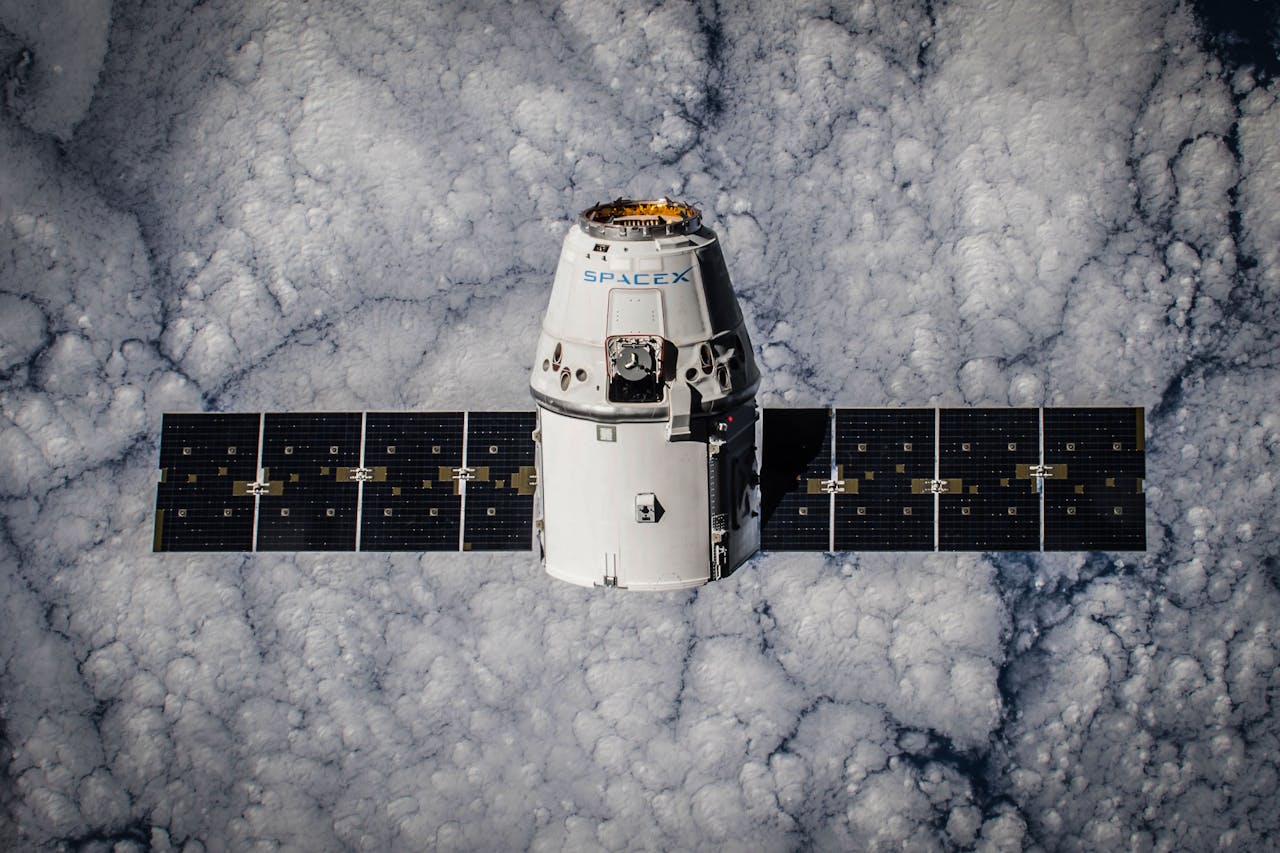In the modern age of space exploration and communication, satellites have become indispensable for a wide range of applications, from global communications and weather monitoring to scientific research and GPS navigation. The construction of satellites is a highly sophisticated process that involves selecting materials capable of withstanding the harsh environment of space. Polymers, due to their unique properties, play a vital role in the structural, thermal, and electrical systems of satellites, offering lightweight strength, thermal insulation, and resistance to radiation and corrosion. These properties ensure the satellite’s reliable operation over extended periods in the extreme conditions of space.
Satellite Construction and Use
Satellites are composed of several key systems, including the structural frame, thermal management systems, solar panels, communication arrays, and scientific instruments. These components must be able to withstand the challenges of space, including exposure to the vacuum, intense solar radiation, extreme temperature fluctuations, and mechanical stresses during launch. Polymers are crucial in helping satellites operate efficiently and reliably in this demanding environment.
1. Structural Frame: Lightweight and Strong Materials
The structural frame of a satellite is its backbone, providing support for all other systems. It needs to be strong enough to withstand the forces exerted during launch, yet lightweight to ensure fuel efficiency. Polymers like Polyether Ether Ketone (PEEK) and Polyether Ether Ketone GF30 (PEEK GF30) are used in constructing these frames. PEEK offers excellent mechanical strength, high-temperature stability, and chemical resistance, making it ideal for critical structural components.
PEEK GF30, a glass fiber-reinforced version of PEEK, provides even greater rigidity, which is necessary for areas that experience higher stress. These polymers significantly reduce the overall weight of the satellite, which is a key factor in minimizing the costs of launching the satellite into orbit.
2. Thermal Management: Withstanding Temperature Extremes
Satellites face extreme temperature fluctuations in space, from intense heat when exposed to the sun to freezing cold in the Earth’s shadow. Polyimide (PI) and Polytetrafluoroethylene (PTFE) are widely used in the thermal management systems of satellites.
Polyimide is often used in thermal insulation and protective coatings due to its ability to withstand high temperatures, sometimes reaching over 400°C, without degrading. It is also used in multi-layer insulation (MLI), which protects sensitive instruments from the extreme cold of space by reflecting heat away.
PTFE, known for its low-friction and high-temperature resistance, is used in heat shields and gaskets to manage the temperature of critical components. It ensures that the satellite’s electronics and structural materials remain within their operational temperature limits, preserving functionality over long missions.
3. Electrical Insulation: Protecting Sensitive Electronics
Satellites are equipped with sophisticated electronics for communication, data collection, and navigation, which need to be protected from electrical interference and short circuits. Perfluoroalkoxy (PFA) and Polyvinylidene Fluoride (PVDF) are two polymers used for electrical insulation in satellites.
PFA is used to insulate wires and electrical components because of its excellent electrical properties and resistance to radiation. It ensures that the electrical systems can operate without interference, even in the vacuum of space.
PVDF is another crucial polymer used in electrical insulation. Its resistance to corrosion and radiation makes it ideal for protecting satellite circuits and connectors from the harsh space environment, ensuring long-term reliability and performance.
4. Radiation Protection: Shielding Electronics and Components
Satellites are constantly bombarded by cosmic radiation and solar radiation, which can degrade materials and damage sensitive electronics over time. Polymers such as Polyethylene (PE) and Polyimide (PI) are used to shield components from radiation.
Polyethylene is highly effective at absorbing cosmic rays and protecting vital electronics from radiation. It is often incorporated into shielding layers around sensitive instruments, ensuring that they can continue to function despite the constant exposure to space radiation.
Polyimide, in addition to its thermal properties, also offers resistance to radiation, making it an essential material for protecting electrical circuits and mechanical components from degradation.
5. Solar Panels and Antennas: Ensuring Reliable Power and Communication
Solar panels and communication antennas are critical components of a satellite, as they generate the satellite’s power and enable communication with Earth. Polycarbonate (PC) and Polypropylene (PP) are used to construct components of these systems.
Polycarbonate is used for optical components in solar panels due to its transparency and impact resistance. It protects the solar cells from debris and environmental damage while allowing sunlight to pass through efficiently.
Polypropylene is used in parts of the antenna arrays for its lightweight properties and resistance to UV radiation. This ensures that the communication systems remain operational even after prolonged exposure to the harsh conditions of space.
Conclusion
Polymers are indispensable in the construction and functionality of satellites, providing essential benefits such as lightweight strength, thermal insulation, radiation protection, and electrical insulation. Advanced polymers like PEEK, PTFE, Polyimide, and Polyethylene are integral to satellite systems, helping them withstand the extreme conditions of space while ensuring long-term durability and reliable operation. As satellite technology continues to evolve, the role of polymers in space exploration and communication will only grow, supporting new missions and expanding humanity’s reach into space.

